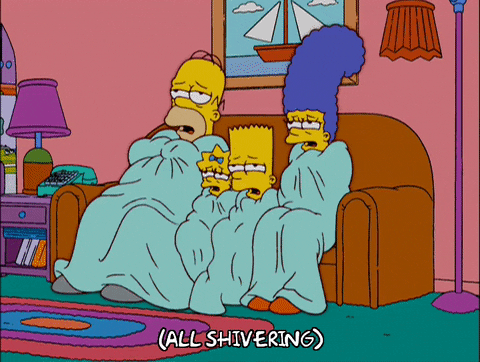Ping! You get an email. "Hello, Valued Customer", it says. Oh, how nice, you think. Click, click, open email. Cube after cube of ice flows into your room through your computer screen. Damn, you think. Not another cold email.
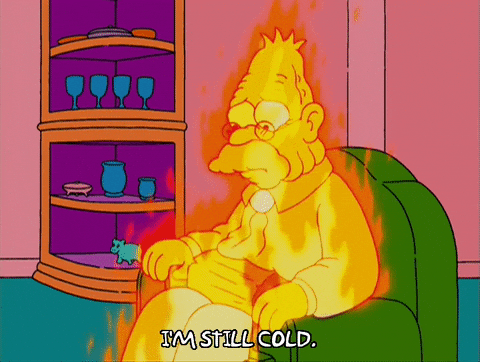
The inbox of the average office worker is a wild and competitive place. Among the newsletters, promotional, and work social emails, it's become harder and harder to stand out. In fact, the average person receives more than 120 emails a day. 59% of these recipients say they are sent sales emails that are irrelevant.
On the other side, buyers want to hear from reps in the research stages of the buying cycle. In fact 71% want to hear from sellers when they are exploring a new product or idea. Plus, 8 out of 10 prospects prefer talking to reps over email. So, this is where cold emailing comes in. But let's start with asking:
What is a B2B cold email?
Cold emails are a selling technique that involves sending a pitch to a business or potential customer, when there is no current relationship between sender and receiver.
But using a series of well-crafted emails, with a clear call to action, these emails can spark a relationship, build a rapport, and encourage the recipient to reach out to the salesperson over the phone.
It's an effective, but underrated, strategy. We all know that well done personalisation, with a little bit of creativity, is the secret to standing out in B2B sales. So, keeping cold emails impactful, and not creepy, is a careful balancing act.
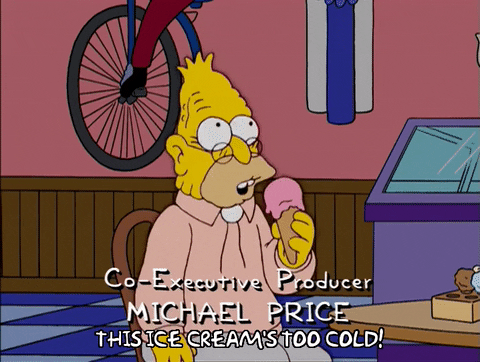
A good cold email should include:
- Your real name, contact info, and job title.
- Customised content for the recipient
- A specific request, with a clear CTA
- A short, catchy subject line. According to a study by Aweber, 82% of experts send subject lines with 60 characters or less.
- No more than 100 words. According to Boomerang's study of 40 million emails, cold emails between 50 and 100 words get higher reply rates.
- An ABM approach. Personalised the email with the lead's recent activity and interests. More "I like your recent article on X" over "I like the new wallpaper in your living room".
Then, you should be sending out around 25-50 emails a day - don't over-do it when you begin. The goal is to find out what works, and make sure you have enough time to follow up with the people who respond.
Then, it's repetition, repetition, repetition. Experiment and measure the responses. If response rates are below 5%, there's something wrong. 10%, you're doing something right. And above this? Well, it's all smooth sailing from there.
But remember, not every aspect of a cold email has to be about selling, or have a commercial motive. B2B thrives with long term, loyal relationships, so consider building this as a priority.
Let's have a look to see who's doing the best cold emails, with copy as cool as ice. The bee's freeze. Those in the snow. Sorry.
1. Use humour
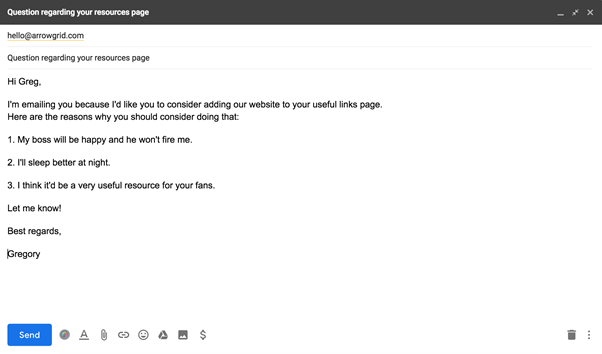
Greg Golinski, SEO Manager at YourParkingSpace shows us how to use humour to stand out in the inbox.
Humour can be a good tool to use, if it fits your audience. It can build relationships, create trust, and start that precious rapport.
The thing is, we like to buy things from people we like - that's a scientific fact.
B2B tends to be seen as a pretty formal, serious industry, so by using a little bit of humour alongside the personalisation, you will be seen as likable, and authentic.
You might also want to try out some images, gifs or emojis, to create this relaxed atmosphere. But make sure your audience will be receptive to this kind of messaging - don't send a South Park gif to a government organisation, for example. But gifs can, in the right circumstances, really work.
Sam Parr, founder of HustleCon, a start-up event for non-tech people, made a number of gifs for all his recipients. This communicated a personalised message in a way which was bite-sized, fun, and un-corporate.

2. Keep it short
According to Boomerang’s analysis of 40 million emails, between 50 and 100 words is the sweet spot for higher response rates.
Just like Bryan Harris' example.
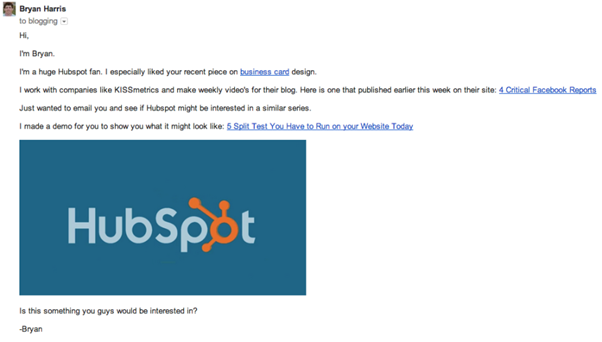
This successful pitch to Hubspot worked because it delivers a ton of info, in a very succinct way. We've already been through the fact that inboxes are overfilled, so recipients don't have the time to read the lovingly-crafted epic poem you've written, no matter how many metaphors and themes you've woven into the text.
You might have a great product or service, but if your benefits are getting lost in the copy, or are being overshadowed by other value properties, your reader will get confused.
So, stick to one thing you're trying to push, support that idea, and provoke the reader's interest. And provide proof to support your argument. This way you're providing value and establishing trust, whilst earning their attention.
Make sure you communicate: The value your service will provide, the offer you're making, the proof, and the CTA. Avoid; loads of confusing details, nebulous or unproven facts, and asking too much from the buyer.
3. Have a single, simple CTA
Known as the "paradox of choice", providing an individual with too many options actually leads to less decisions being made. Think blue pill or red pill, versus blue pill or red pill or yellow pill or orange pill or purple pill. So, don't overload your lead with CTA after CTA, option after option. Stick with one, and make the decision clear - yes or no.
Plus, you've got the spam filter to consider too.
Excessive links and attachments can flag your email as spam, so no matter what you've got in the email copy, it won't matter.
Carve your message down to one main point, and funnel your lead down to a single CTA. Take a look at the example below:
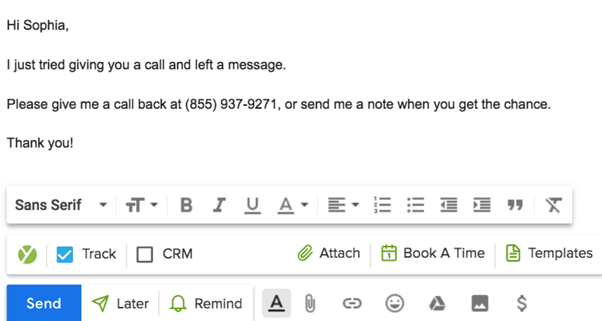
4. The recent news email
People love to be praised. So, the recent news email gives you a chance to break the ice, establish first contact, and stroke some egos.
After a recent review, piece of news, or business success a company has had, just send a coincidental email just congratulating them, and introducing yourself. See this example from Christ Bibey:
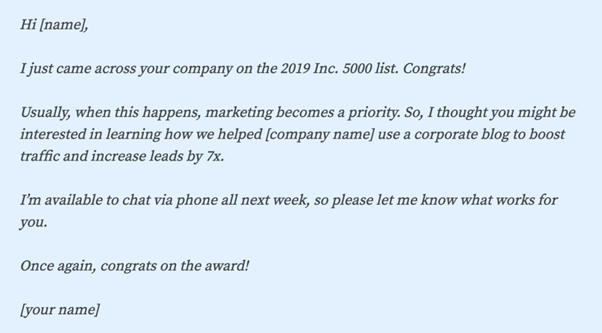
He links to how his service can benefit them, especially after their recent news. This goes beyond the congratulation, and inserts himself into their current situation. Pretty smart.
5. The CEO recommendation
"My higher-up asked me to reach out" is a clever technique to use in your cold email templates.
This involves the sales rep writing an email that appears as if a higher-up or big-wig has asked specifically for the sales person to reach out to this company. The sales person will then forward that email to the prospect, including the "forwarded email". The subject line plays into this with "Fwd: YourCompany + ProspectCompany". Sneaky, sneaky.
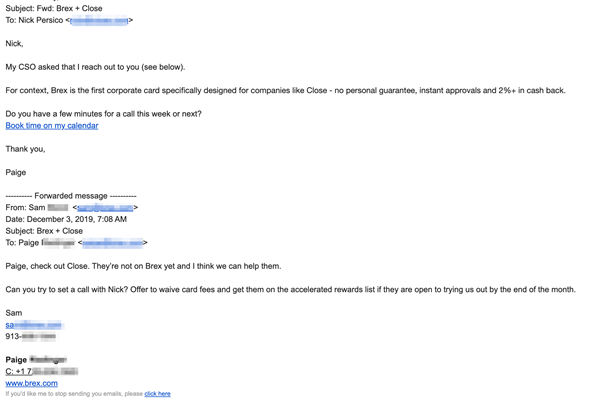
If you get caught by a sales person familiar with this technique, it'll be a tiny bit embarrassing. But for those unaware, it can be very effective. It's not just a case of a sales person throwing out a huge net and hoping someone responds, it's a big-name CEO asking specifically for that individual and their company.
